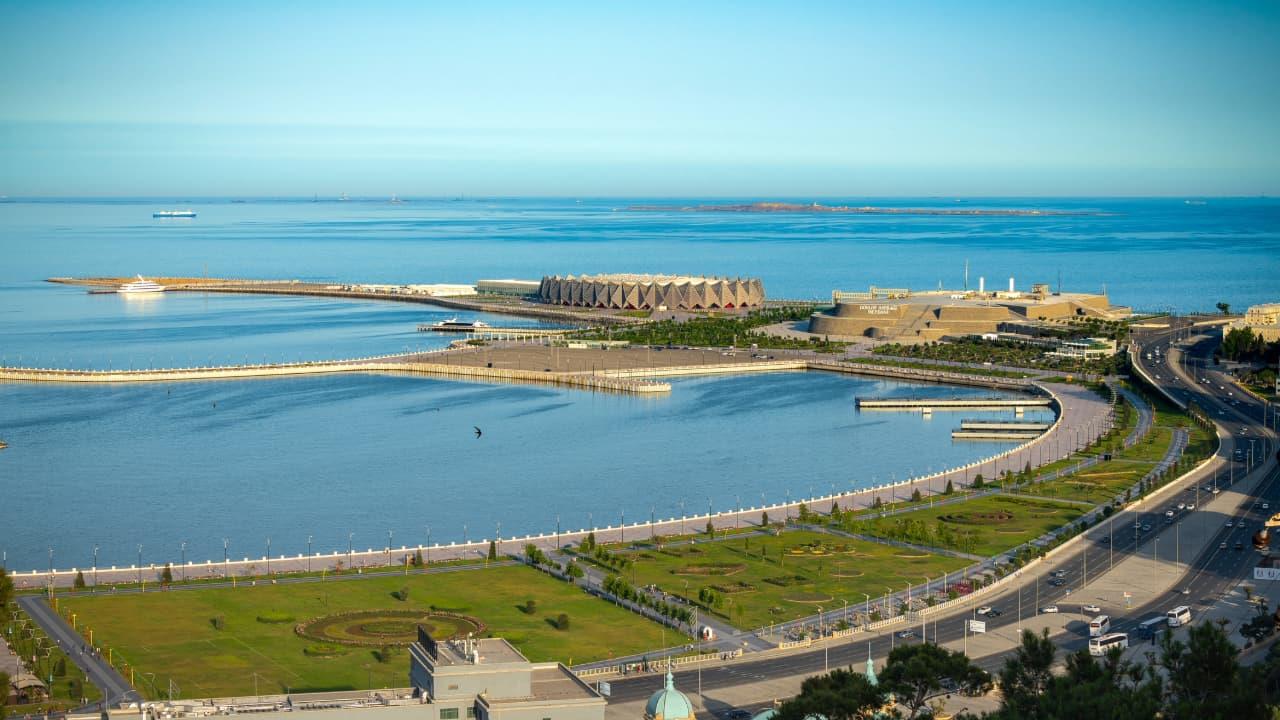World's Largest Inland Sea Is Rapidly Drying Up Due To Climate Change
The Caspian Sea, which was once a vibrant habitat for flamingos, sturgeon, and thousands of seals, is drying up rapidly. Reports suggest that along its northern edge, water levels are dropping so fast that large areas of sandy land are appearing where there was once water. In some places, the sea has receded by over 50 kilometres. Wetlands are turning into deserts, fishing communities are losing their access to water, and oil companies are having to dig longer channels just to reach their offshore platforms.
Experts say that this significant drop in the Caspian Sea's water levels is largely due to climate change. The Caspian Sea is the largest body of water in the world. It is located between Europe and Central Asia and borders five countries Azerbaijan, Iran, Kazakhstan, Russia, and Turkmenistan. It supports about 15 million people who depend on it for homes, jobs, and food.
Importance of the Caspian Sea
The Caspian Sea is vital for fishing, shipping, and the production of oil and gas. It also holds growing importance due to its location at the crossroads of several powerful nations' interests. As the sea becomes shallower, governments face a difficult challenge: how to sustain businesses and communities while also protecting the unique plants, animals and ecosystems.
Many of these natural areas have dried up and turned into deserts. The sample pattern is happening all around the sea. Coastal towns watch helplessly as the water pulls away from their harbours, leaving docks and boats stranded far from the shore. People are worried about what the future holds.
The current decline in water levels is happening at an unprecedented speed and scale. Since the year 2000, the sea has lost about 6 centimetres of depth each year. Since 2020, the drop has accelerated to 30 centimetres a year in some areas. In July 2025, Russian scientists reported that the sea had reached its lowest level since measurements began.
In the past, changes in water levels were driven by a mix of natural events and human activities, such as redirecting river water for farming or industry. Today, the main cause is global warming. Even though the Caspian Sea is vast, rising temperatures mean less water flowing into it from rivers and rainfall. At the same time, more water is evaporating from the surface due to warmer temperatures.
Scientists predict that if the world meets the Paris Agreement goal of limiting warming to 2°C, the Caspian Sea could drop by up to 10 metres compared to 2010. However, if greenhouse gas emissions continue at the current rate, the drop could be as much as 18 metres.
The northern part of the Caspian Sea is very low, often just about five metres deep. This means even a small drop in water level can expose large areas of seabed. Recent studies show that a 10-metre drop would uncover 112,000 square kilometres of land, which is larger than the entire country of Iceland.
What's at Risk?
Nearly half of the unique ecosystems in the Caspian region could disappear entirely. The endangered Caspian seal could lose over 80% of its breeding habitats. The Caspian sturgeon, known for its prized caviar, would lose important spawning grounds.
Experts say millions of people could be forced to relocate or live in worse conditions as the sea shrinks. The Caspian Sea's only link to global shipping routes is through the Volga River delta, which is now becoming shallower. That makes it harder for ships to navigate. Ports like Aktau in Kazakhstan and Baku in Azerbaijan already require constant dredging to maintain deep enough harbours for ships. Oil companies have to dig longer channels to reach their offshore rigs in the northern part of the Caspian.
The costs of dealing with these problems are billions of dollars, and they are increasing every year. The Caspian Sea is also part of an important trade route known as the“middle corridor,” linking China and Europe. As the sea continues to shrink, ships can carry less cargo, costs go up, and towns and ports risk becoming far from the water.
A Race Against Time
Countries surrounding the Caspian are trying to adapt. They are relocating ports and digging new channels. However, these efforts can sometimes harm the environment. For example, there are plans to create a new major shipping channel across the“Ural saddle,” an important breeding and feeding area for seals. It is also a vital habitat for wildlife struggling to survive as the sea changes.
A flexible, long-term plan is needed that looks ahead and protects the areas that wildlife will need in the future. The Caspian Sea's future extends far beyond its shores. It is a significant example of how climate change is affecting large inland seas around the world, from South America to other regions.
Legal Disclaimer:
MENAFN provides the
information “as is” without warranty of any kind. We do not accept
any responsibility or liability for the accuracy, content, images,
videos, licenses, completeness, legality, or reliability of the information
contained in this article. If you have any complaints or copyright
issues related to this article, kindly contact the provider above.
Most popular stories
Market Research

- Jpmorgan Product Head Joins GSR Trading MD To Build Institutional Staking Markets
- Kintsu Launches Shype On Hyperliquid
- R0AR Launches Buyback Vault: Bringing 1R0R To R0AR Chain Unlocks New Incentives
- Excellion Finance Scales Market-Neutral Defi Strategies With Fordefi's MPC Wallet
- Ethereum-Based Meme Project Pepeto ($PEPETO) Surges Past $6.5M In Presale
- Falcon Finance Unveils $FF Governance Token In Updated Whitepaper





















Comments
No comment